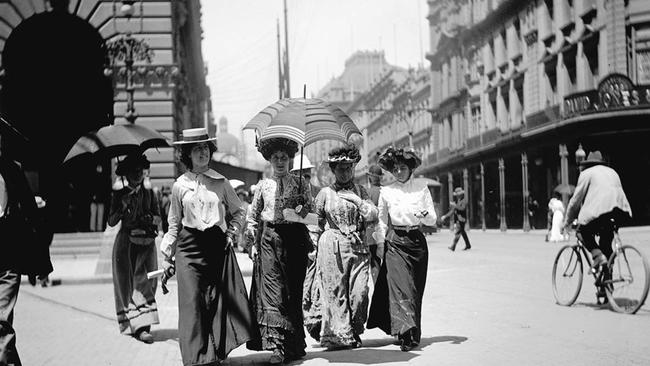Named after a former premier our great pedestrian plaza is still the heart of our city
The heart of Sydney continues to beat despite an attack in our social centre

Today in History
Don't miss out on the headlines from Today in History. Followed categories will be added to My News.
A city grieves, still struggling to understand the terror that struck on a Monday morning that should have been like any other. Key to the healing process will the moment people return to Sydney’s sandstone and marble heart, damaged but not broken by the terrible events of this week.
Martin Place was once our financial hub, our communications hub, our biggest gathering place. Today it is still a place where thousands come together every day, sometimes just passing through, at others stopping to eat, to meet friends or just sit and enjoy some time out of the hustle and bustle.
This marvellous mall, shut off from motor traffic and a sanctuary for pedestrians, is like a tranquil valley in the midst of Sydney’s throbbing streets and towering skyscrapers. Yet it only came into existence because of a post office.
Maps of Sydney before the 1860s show no sign of the plaza as it is today. After Governor Lachlan Macquarie straightened out the city’s roads in the 1810s there was a large grid across the middle of the city, with George, Pitt, Castlereagh, Elizabeth, Phillip and Macquarie Streets forming long blocks bounded by Hunter and King streets, broken up only by some narrow streets and laneways such as Moore St and St Martins Lane.
By the 1850s these streets were lined with buildings, elthough in the 1860s some were already being demolished to make way for an ambitious new post office.
As the gold rush brought boom times to Sydney in the 1850s, people began suggesting it needed a broad avenue as a kind of city centre. It was envisaged a grand post office would be the centrepiece, with financial institutions that depended on telegraph services operating out of the post office setting up nearby.
The city council baulked at resuming enough buildings to create an avenue from George St to Macquarie St, but in the 1860s wide support for building a post office necessitated resuming part of St Martins Lane to create room for the stately building.
When work began in 1864 it was intended the main facade would be on George St, because the lane beside the post office (part of what is today Martin Place) was not wide enough to show off an attractive portico. After the first phase of the building was completed in 1874 there were calls to broaden the street beside the post office to better display the building.
Architect James Barnet took the bold step of drawing up plans to extend the colonnade back toward Pitt St. Building got under way in 1887, by which time the street had been renamed Martin Place in honour of chief justice James Martin, one-time premier.
Momentum to create Sydney’s grand avenue was building. In 1888 The Illustrated Sydney News showed an artist’s impression of the street as an Italian-style piazza, lined with fountains and sculptures.
Clearing of buildings to broaden the street began in the late 1880s to 1890 when a fire destroyed structures lining Moore St. This allowed the government to extend the broad avenue of Martin Place through to Castlereagh St, although Moore St would retain that name for years.
By the turn of the century Martin Place was home to important buildings such as the Bank of Australasia. In 1907 architect John Sulman even proposed extending the avenue from Darling Harbour to Wolloomooloo.
During World War I the street, Sydney’s broadest, was the gathering place for recruitment drives and fundraisers for the war effort. Photographs show model boats erected, and tanks being rolled into the square to publicise the drives. It was also where many gathered to celebrate the war’s end and in 1929, a cenotaph dedicated to the war dead was unveiled, making it a focus of Sydney’s Anzac commemorations.
In 1934 Martin Place was extended through to Elizabeth St and in 1935 to Macquarie St. The extra space was needed to hold the even bigger crowds flocking there at the end of World War II in 1945.
There was debate in the 1950s and ’60s over whether to create a pedestrian plaza. In the ’70s the avenue was closed to traffic in several stages, a bold experiment in creating a pedestrian haven in the middle of the city. Meanwhile, work on the Eastern Suburbs Railway line under Martin Place continued until its completion in 1979.
The GPO moved its headquarters in the ’90s and sold off the building. It was redeveloped into a hotel and restaurant complex. By then many of the banks had also moved premises turning the grand mall into the social hub we know and love so much.
troy.lennon@news.com.au


